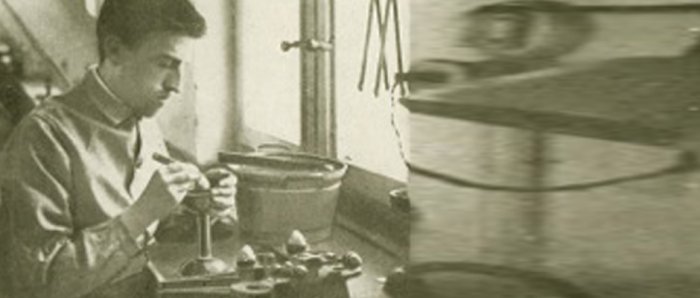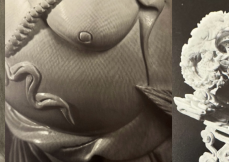
Those lost trades | EN
The diamond sector has considerably developed over the last five centuries. From the individual mill worked by hand, the hydraulic mills to overall electrification, the cutting workshops have known them all. If the cutting technique, as discovered by Louis de Berquem in Bruges, nevertheless remains the basic principle, several trades related to it have however been lost.
In the early days, the individual mill was worked by hand, and man was the only power. Then later on came the horse that took over when the cutting workshops were being set up. The whole infrastructure was revolving around this motive force In the Jura, and in ldar-Oberstein, the mills were enjoying the power of the water, which they could take from the many surrounding rivers. At the end of the 19to century, the steam machine started being established in the main workshops where tens, or even hundreds, of cutters were working. It is in those days that the diamond workers unions were set up. The situation became completely different around 1920 due to the electrification of the country. Small size and family workshops were set up in the countryside, which caused the unions to go mad about that since they were losing control over them.
Bruting
This operation consists in giving a pre-shape or a rough shape to the rough stone. Therefore, what was required was to strongly fix two rough diamond crystals with a cement-wax, a mixture of lacquer-rubber, resin, fine sand and crushed glass, on a wooden stick. By rubbing the two stones against each other, the desired shape would be got for each one of the stones. This work used to be performed on a box, like the cleavers, only bigger in size. The boart, or diamond powder, used to be collected in this box. For this hard operation, which required a great of strength from the bruter, the worker had to protect his hands by wearing thick leather gloves. At the start of the 20th century, bruiting was modernised and a turning machine was designed, which was working with a pedal first, then later on with an electric engine Then came the single head machine on which the stone was set with wax; a few years later, the two head machine enabled to stick the stone between two pots. Those two machines are still in use today, even if the diamond research centre, related to the AWDC, in Antwerp has built automatic bruiting machines driven by computers, enabling to rub the two stones against each other or against a diamond grindstone.
|










